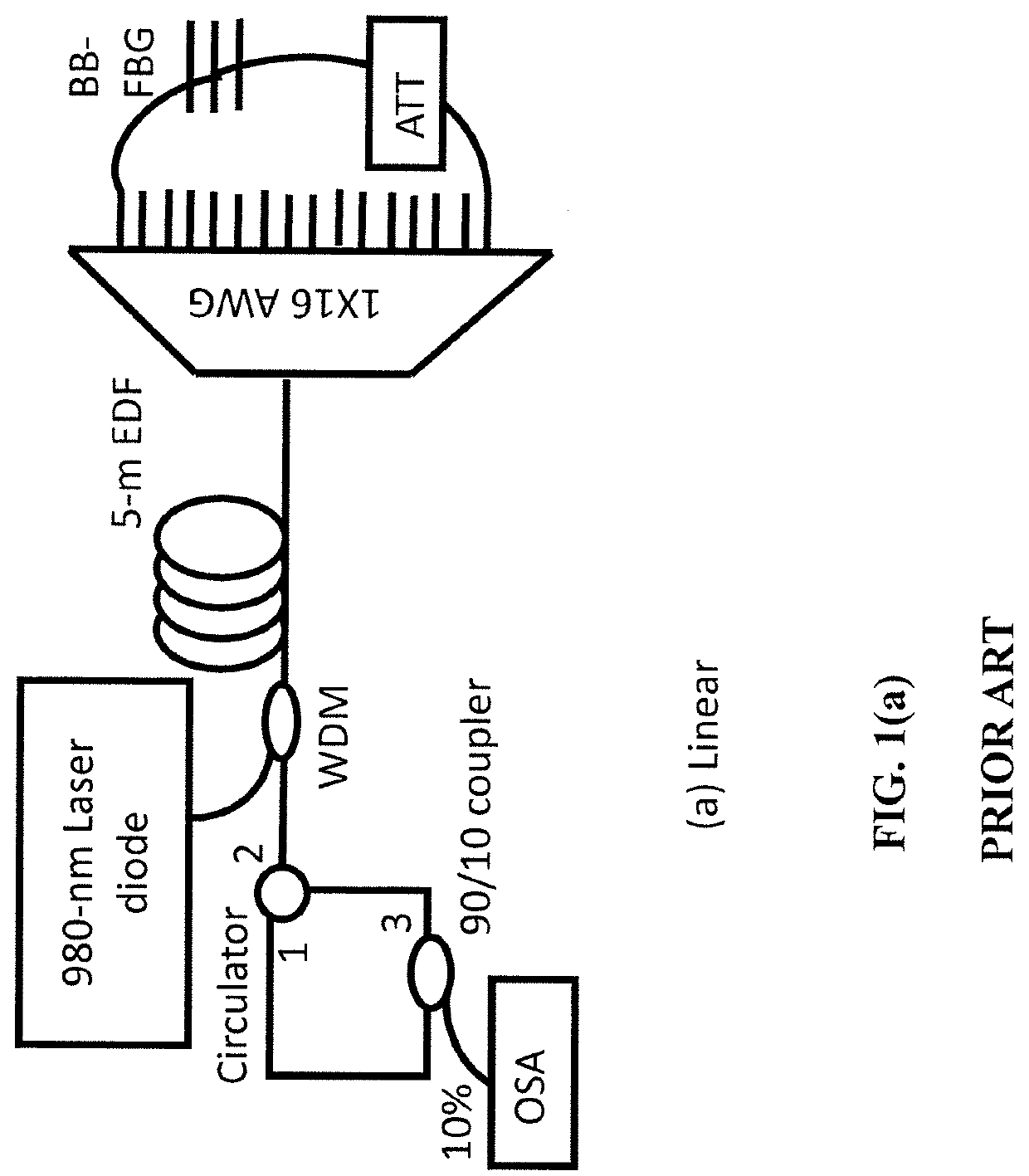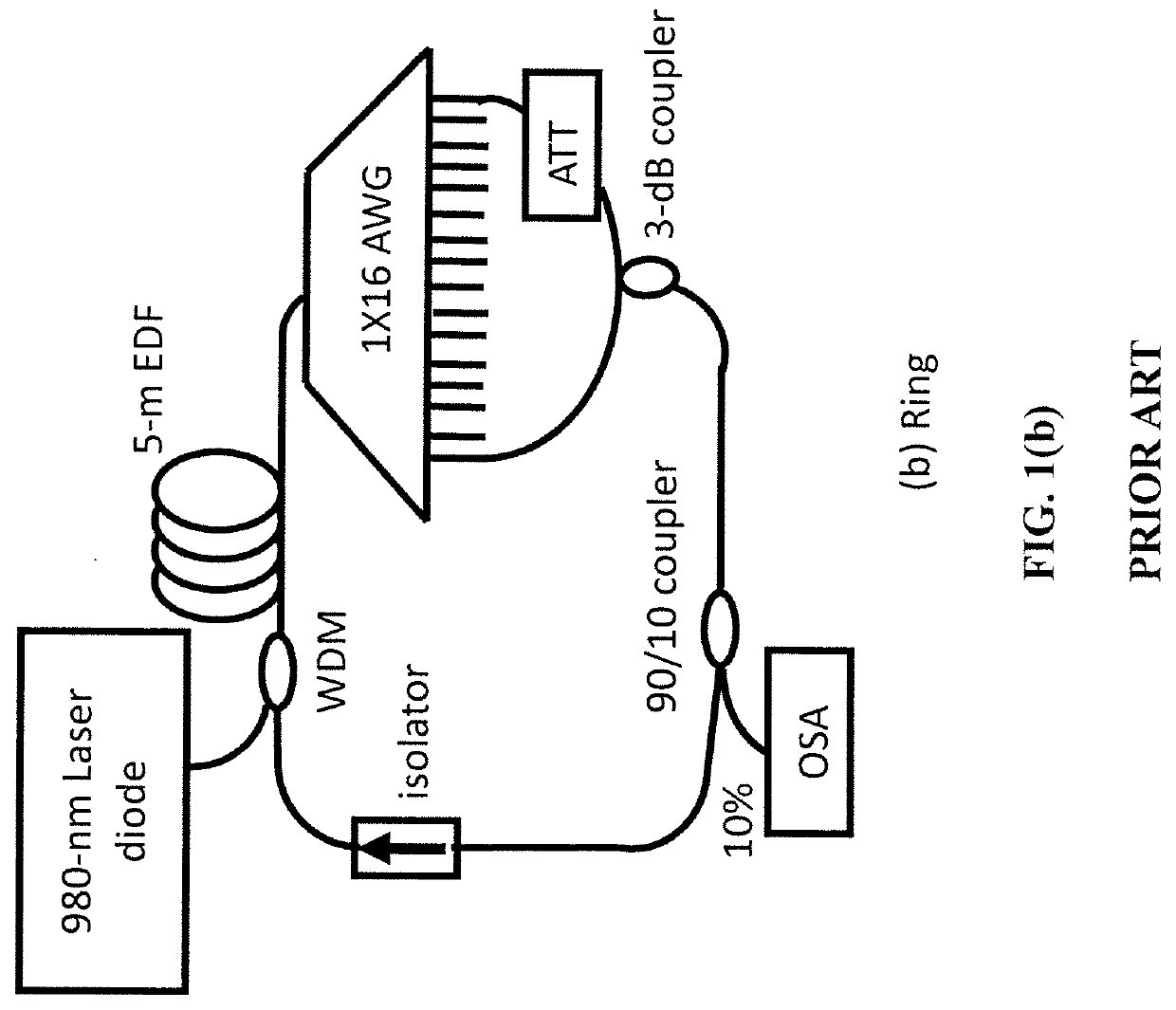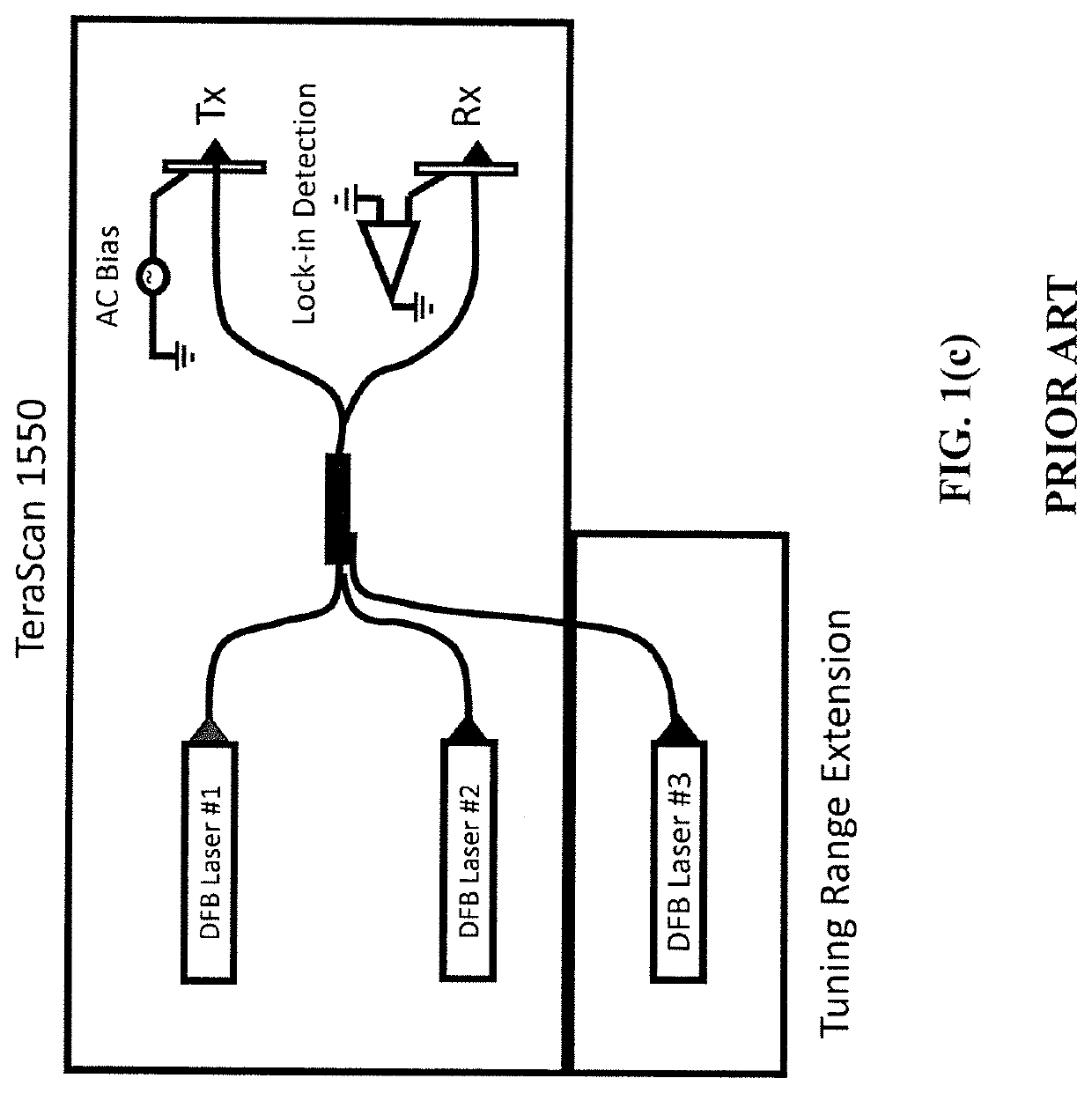Fiber-based continuous optical beat laser source to generate terahertz waves using lithium niobate crystal embedded in the fiber
a lithium niobate crystal and laser source technology, applied in the field of electromagnetic wave generation, can solve the problems of low efficiency, low efficiency, and low efficiency of current fiber-based laser systems for cw (continuous wavelength)
- Summary
- Abstract
- Description
- Claims
- Application Information
AI Technical Summary
Benefits of technology
Problems solved by technology
Method used
Image
Examples
Embodiment Construction
[0042]Referring now to the Figures, and first referring to FIG. 4, an experimental setup is illustrated of the C-band SOA-based tunable fiber laser with two nested ring cavities (i.e., hybrid compound-ring resonator) and two broadband SLMs that can serve as either dual-output ports or a single output port depending on the reflectivity of each SLM. Each ring cavity is comprised of two branches: I-II and I-III, for the inner and the outer ring cavity, respectively. Both ring cavities share a common branch, I, which contains SOA1 (Kamelian, OPA-20-N-C-SU), a tunable optical filter (TF-11-11-1520 / 1570) sandwiched between two similar FBGs, and a polarization controller, PC1. Branch II contains SOA2 (Thorlabs, S1013S), and a polarization controller, PC2. Due to the lack of availability of a third SOA, branch III only contains a polarization controller, PC3. As FIG. 4 portrays, all branches are connected by two 3 dB fiber couplers, C1 and C2, which are connected to SLM1 and SLM2, correspon...
PUM
 Login to View More
Login to View More Abstract
Description
Claims
Application Information
 Login to View More
Login to View More - R&D
- Intellectual Property
- Life Sciences
- Materials
- Tech Scout
- Unparalleled Data Quality
- Higher Quality Content
- 60% Fewer Hallucinations
Browse by: Latest US Patents, China's latest patents, Technical Efficacy Thesaurus, Application Domain, Technology Topic, Popular Technical Reports.
© 2025 PatSnap. All rights reserved.Legal|Privacy policy|Modern Slavery Act Transparency Statement|Sitemap|About US| Contact US: help@patsnap.com



